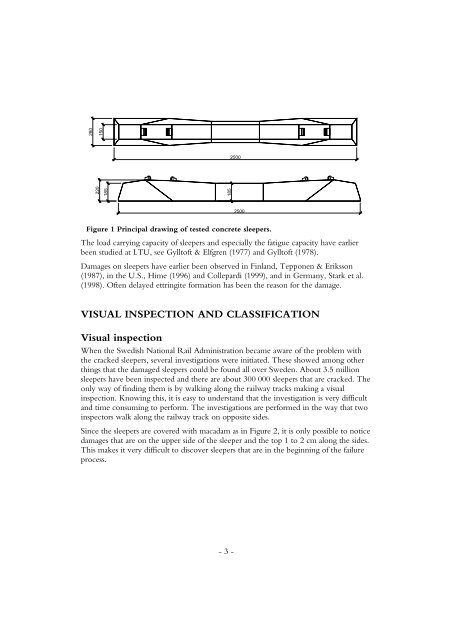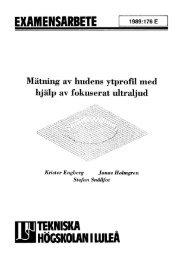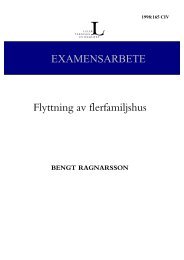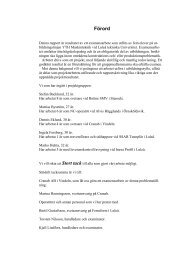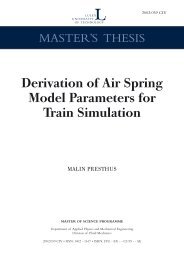LICENTIATE THESIS - Luleå tekniska universitet
LICENTIATE THESIS - Luleå tekniska universitet
LICENTIATE THESIS - Luleå tekniska universitet
You also want an ePaper? Increase the reach of your titles
YUMPU automatically turns print PDFs into web optimized ePapers that Google loves.
Figure 1 Principal drawing of tested concrete sleepers.<br />
The load carrying capacity of sleepers and especially the fatigue capacity have earlier<br />
been studied at LTU, see Gylltoft & Elfgren (1977) and Gylltoft (1978).<br />
Damages on sleepers have earlier been observed in Finland, Tepponen & Eriksson<br />
(1987), in the U.S., Hime (1996) and Collepardi (1999), and in Germany, Stark et al.<br />
(1998). Often delayed ettringite formation has been the reason for the damage.<br />
VISUAL INSPECTION AND CLASSIFICATION<br />
Visual inspection<br />
When the Swedish National Rail Administration became aware of the problem with<br />
the cracked sleepers, several investigations were initiated. These showed among other<br />
things that the damaged sleepers could be found all over Sweden. About 3.5 million<br />
sleepers have been inspected and there are about 300 000 sleepers that are cracked. The<br />
only way of finding them is by walking along the railway tracks making a visual<br />
inspection. Knowing this, it is easy to understand that the investigation is very difficult<br />
and time consuming to perform. The investigations are performed in the way that two<br />
inspectors walk along the railway track on opposite sides.<br />
Since the sleepers are covered with macadam as in Figure 2, it is only possible to notice<br />
damages that are on the upper side of the sleeper and the top 1 to 2 cm along the sides.<br />
This makes it very difficult to discover sleepers that are in the beginning of the failure<br />
process.<br />
- 3 -


